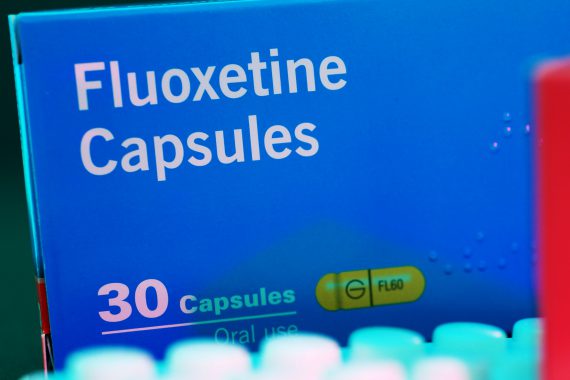NICE guidelines may have inadvertently boosted prescribing rates of antidepressants in under 18s, say researchers.
Analysis of GP practice data from 2000 to 2010, showed that prescribing of SSRIs in children and adolescents sharply declined following warnings over their safety issued in 2003 after years of steady increase.
Researchers had expected this decline to continue following NICE guidelines in 2005 that re-emphasised caution in prescribing for young people and promoted the use of psychosocial intervention in the first instance.
But the analysis showed the use of SSRIs began to rise once more and the increase was only seen in the three specific types – fluoxetine, citalopram, and sertraline, which were all named in the 2005 NICE guidance.
Writing in BMJ Open, the researchers said that doctors may have interpreted their inclusion in the guidelines as ‘approval’ for their widespread use, leading to the upward trend in prescriptions.
However, NICE has said this was not its intention and stressed current guidance states that antidepressant medication should not be offered to a child or young person, except in combination with concurrent psychological therapy.
Warnings over the use of antidepressants in patients under the age of 18 were first raised by regulators in 2003 after reports of the risk of self-harm and suicide.
A review from the Committee on Safety of Medicines later that year advised against use of all SSRIs in children and adolescents with the exception of fluoxetine.
NICE 2005 guidance reiterated that psychosocial intervention should be the first port of call, with fluoxetine reserved for moderate to severe depression that did not respond to other treatment.
The recommendations said that in the case of fluoxetine ‘non-response or poor tolerability’, sertraline or citalopram could be considered.
It is not the first time figures have highlighted growing use of antidepressants in young patients.
Study leader Dr Paul Tiffin from the University of York said they had not expected to see a rise after 2005 because the NICE guidance ‘seemed to have been written to discourage antidepressant prescribing per se in under 18s’.
‘Although the guidelines gave cautions and caveats to their use, practitioners may have interpreted these recommendations as approval and validation for their widespread use,’ he concluded.
Dr Tiffin added: ‘I don’t think NICE could have presented their guidance differently – however, our findings stress the importance of conducting research to assess for any unintended consequences of such guidelines having been issued.’
A NICE spokesperson said: ‘Current NICE guidance, published this year, states that antidepressant medication should not be offered to a child or young person with moderate to severe depression except in combination with concurrent psychological therapy.
‘When exercising their judgement, health professionals are expected to take our guidance fully into account, alongside the individual needs, preferences and values of their patients.
‘Prior to this update our 2005 guidance recommended that, following a multidisciplinary review, fluoxetine should only be offered for young people (12-18 years) and children (aged 5-11) with moderate to severe depression if psychological therapy had been attempted first.’
Professor Azeem Majeed, head of primary care and public health at Imperial College London, said while the findings were interesting it was important to note that prescribing rates had remained at a very low level.
He also pointed out that for GPs to refer patients for psychosocial support CAMHS needed to have capacity.
‘Most GPs would generally only prescribe antidepressants in this age group after receiving specialist advice,’ he said.
‘I think there is a strong argument that this prescribing and the monitoring of patients should be the responsibility of CAMHS teams.
‘I know many GPs would be very happy with this approach but it does require CAHMS teams to be adequately funded and staffed, and to be willing to take on this responsibility.’
Pulse October survey
Take our July 2025 survey to potentially win £1.000 worth of tokens














